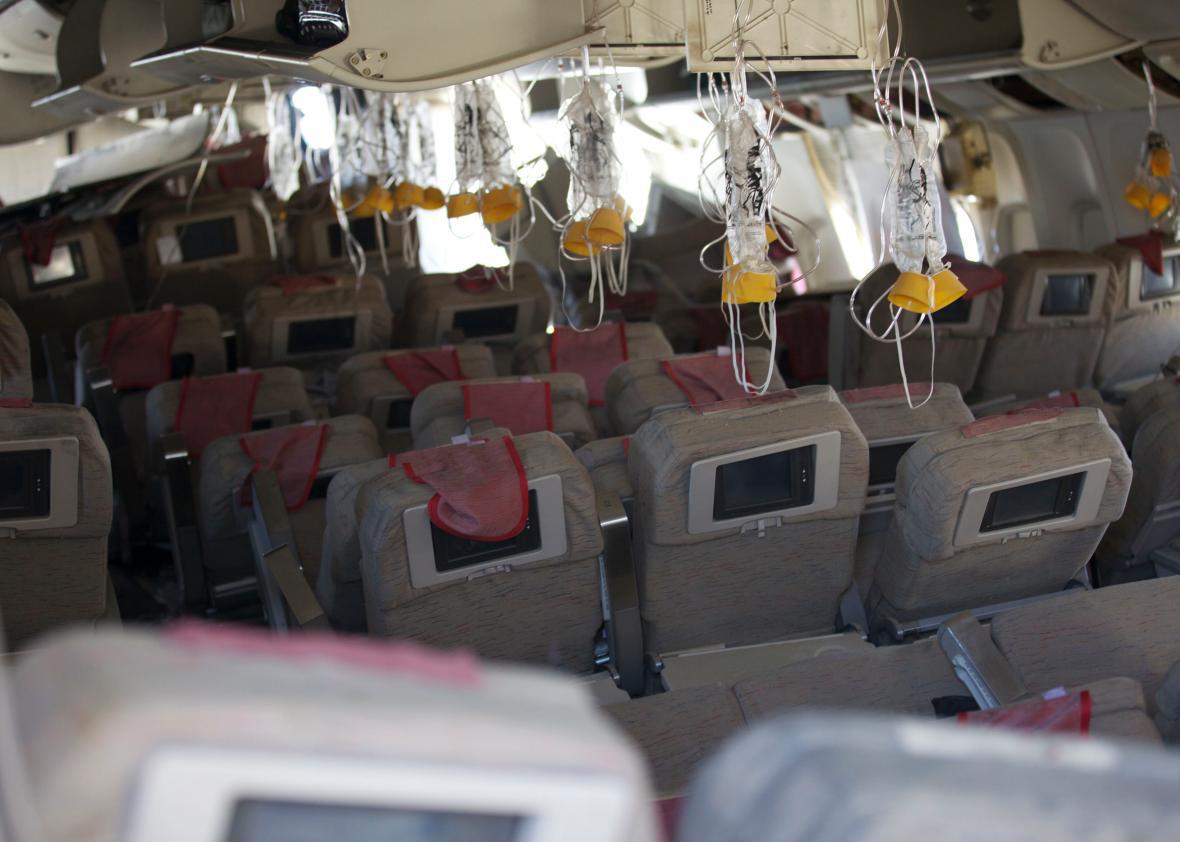This question originally appeared on Quora, the place to gain and share knowledge, empowering people to learn from others and better understand the world. You can follow Quora on Twitter, Facebook, and Google Plus.
Answer by Tom Farrier, former director of safety, Air Transport Association:
Ignore Hollywood. Aircraft involved in crashes are safer than at any time in history, thanks to decades of experience, research, and safety enhancements. According to the Aviation Safety Network, in 2016 there were about 163 aviation “accidents” worldwide, including those involving business jets and military transports as well as jet and propeller airliners. A grand total of 24 resulted in fatalities, meaning only about 15 percent of all accidents in this grouping—which themselves are extremely rare events—actually resulted in lives being lost. Only five of the fatal 2016 accidents were in the U.S, and none involved a major U.S. air carrier.
Consider four possible outcomes to any crash:
- You survive a survivable accident
- You survive a non-survivable accident
- You don’t survive a survivable accident
- You don’t survive a non-survivable accident
So, what the heck is a “survivable accident,” anyway? Well, to synthesize a couple of different takes on the subject, most in the aviation safety business (as well as those interested in other types of vehicle safety), look for three conditions:
- The forces encountered by human occupants were within the limits of human tolerance
- The structure surrounding occupants remains substantially intact, maintaining an uncompromised volume around them
- The postcrash environment does not present an immediate threat to occupants or rescuers
In practical terms, this means directing forces away from people, slowing the onset of those that can’t be redirected, preventing internal structures from failing in such a way as to stick into the area where the carbon-based life forms are, and keeping the fire, smoke, and fumes from easily starting or readily spreading. On this basis, you can see that a smoking hole in the ground is nonsurvivable, and there’s always a possibility that a small number of people don’t get the full benefit of protections that rendered the overall accident to be considered “survivable.” But, there are many, many examples to the contrary in events classified as “accidents” due to property damage and/or major injuries experienced in them.
In February of 2001, the U.S. National Transportation Safety Board released the results of a comprehensive review of air carrier safety. It noted, “Fatal accidents such as TWA flight 800, ValuJet flight 592, and EgyptAir 990 receive extensive media coverage. Nonfatal accidents, however, often receive little coverage. As a result, the public may perceive that most air carrier accidents are not survivable. In fact, the Board’s study shows that since 1983, more than 95% of the passengers survived.” (That includes accident where, given the criteria above, the accident itself should have been considered nonsurvivable.)
A large contributor to this record goes to the many improvements the U.S. Federal Aviation Administration required of air carriers over time. These included:
- Improved seat cushions with reduced flammability
- Floor proximity emergency escape path marking
- Lavatory smoke detectors
- Lavatory fire extinguishers
- Halon fire extinguishers
- Improved interior materials
- Cargo compartment liners
- Cargo compartment fire detection/suppression
- Thermal/acoustic insulation
- 16G seats
- Improved access to certain types of exits
(These are expanded upon in a graphic available at here.)
If you keep passengers properly restrained until the noise dies down and the movement stops, you reduce the likelihood of a fire starting in the first place, you delay its propagation, and you make the byproducts of burning stuff less toxic, you have a much better chance of keeping everybody alive.
This was Asiana Airlines 214, which hit the sea wall in front of the runway touchdown zone on short final to San Francisco International on July 6, 2013. People were ejected from this aircraft during its postimpact tumble and breakup, but two of the three people who died were accidentally struck by first responders in the confusion. There were many significant injuries suffered by the crew and passengers, but the aircraft did what it was supposed to do under extreme conditions: It protected its occupants as well as it possibly could, and it didn’t allow fire to spread until there was time to get everyone evacuated.
Bottom line: Accidents are rare; when they happen, fatalities are that much rarer thanks to a lot of hard work and investment in making planes as safe as possible.
What are the chances of surviving in a plane crash? originally appeared on Quora. More questions on Quora:
